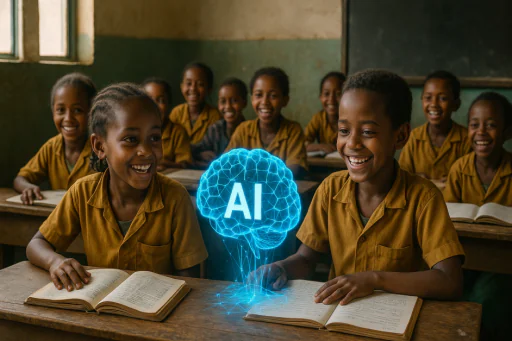Bridging Educational Gaps in the Developing World Through Beneficial AGI: Lessons from Ethiopia
##### Introduction
Education is a vital element for the development of individuals and societies, and it serves as a potent tool for uplifting communities, especially in the developing world. Unfortunately, many regions face significant educational disparities brought on by several factors, including poverty, inadequate infrastructure, and a lack of skilled educators. Artificial General Intelligence (AGI) holds the potential to hasten educational advancements and bridge these gaps. Ethiopia, a rapidly developing nation, provides compelling insights on the integration of technology and education in addressing these challenges.
##### The Current Educational Landscape in Ethiopia
Ethiopia’s educational system has made remarkable strides in recent years. The government has prioritized education, leading to increased enrollment rates and a growing number of schools across the country. However, despite these advancements, several challenges remain. Quality of education, teacher training, resources, and accessibility continue to hinder the system’s effectiveness, particularly in rural areas.
##### The Role of AGI in Education
AGI can serve as a transformative force in education by providing personalized learning experiences that adapt to individual student needs. By utilizing AI algorithms, educational content can be tailored to accommodate various learning styles, speeds, and interests. This personalized approach not only enhances student engagement but also promotes better comprehension and retention of knowledge.
Moreover, AGI can help bridge the gap between students and skilled educators. In regions where qualified teachers are scarce, AGI-driven platforms can deliver high-quality, interactive educational material, allowing students to learn in a more self-directed manner.
##### Enhancing Teacher Training Through AGI
One of the most significant hurdles in the Ethiopian educational system is the lack of adequately trained teachers. AGI tools can facilitate teacher training programs by providing educators with access to vast repositories of knowledge and pedagogical resources. Through simulated teaching environments powered by AGI, teachers can practice their skills and receive real-time feedback, significantly improving the quality of instruction delivered to students.
##### Improving Access to Educational Resources
In many developing areas, physical access to educational resources is a considerable barrier. AGI can address this issue through online platforms and mobile applications that provide access to a wide array of educational materials. By leveraging mobile technology, AGI can reach students in remote locations where internet access is limited.
##### AGI Collaboration in Local Language Development
Language can be a significant barrier to education in Ethiopia, where multiple languages are spoken. AGI can assist in developing educational content in local languages, making learning more accessible and relatable for students. By ensuring that materials are available in native languages, AGI can foster better understanding and retention of information.
##### Conclusion
Bridging the educational gaps in developing regions like Ethiopia is a challenging but essential task. The integration of AGI presents a promising avenue for overcoming existing obstacles. As we embrace innovative technologies, it is crucial to align them with the cultural and socio-economic contexts of the communities they aim to serve. By doing so, we can harness the transformative potential of AGI to create equitable learning opportunities and promote sustained growth in education across the developing world.
